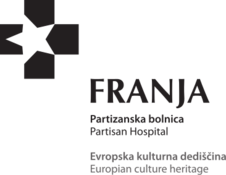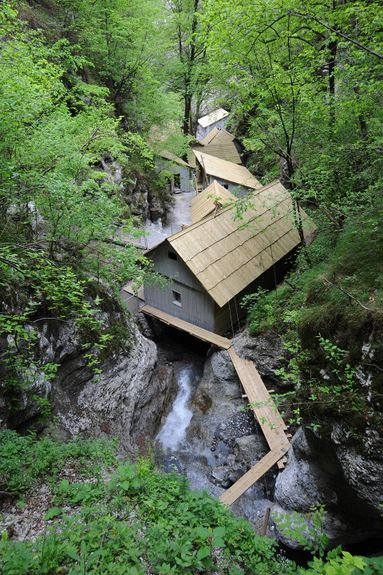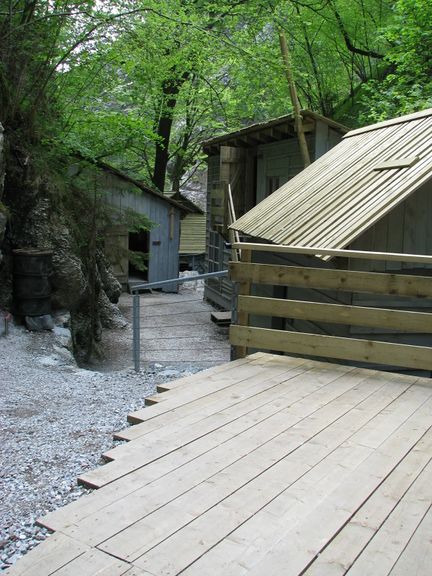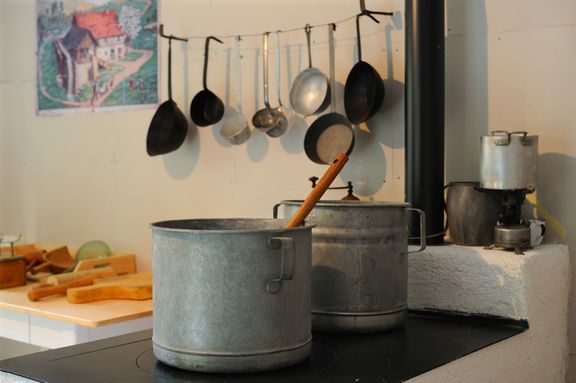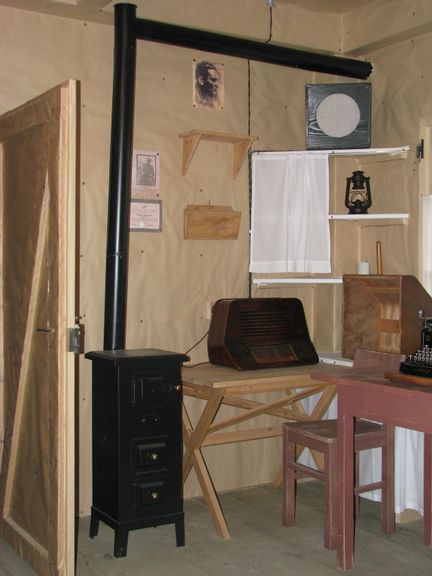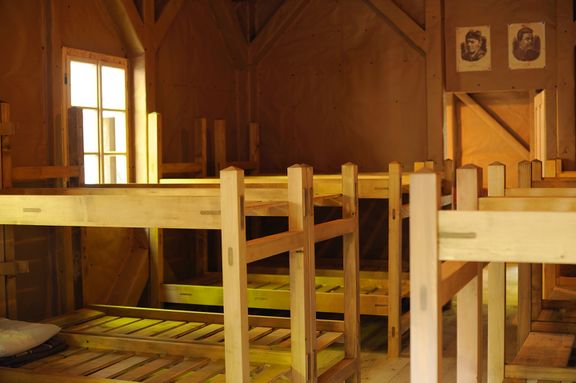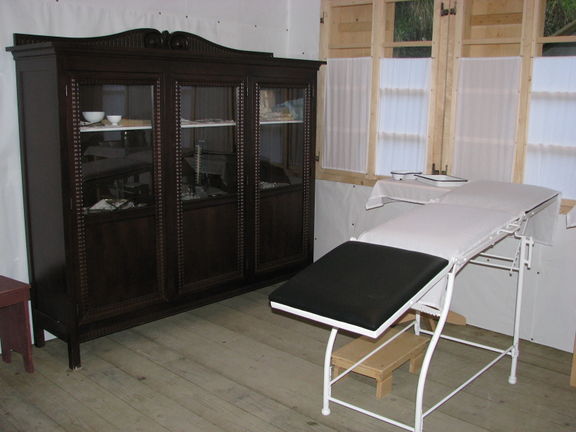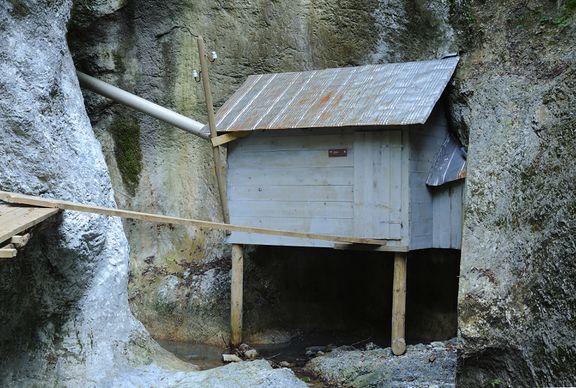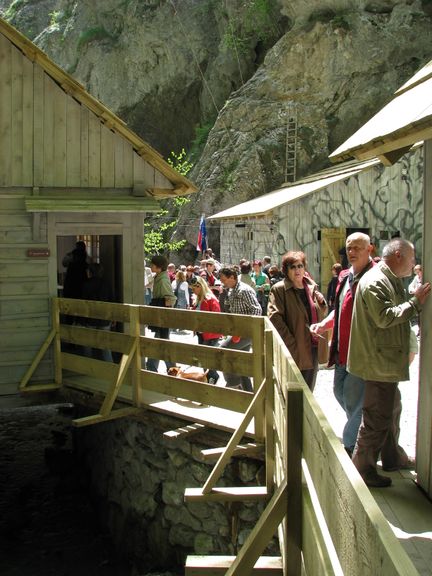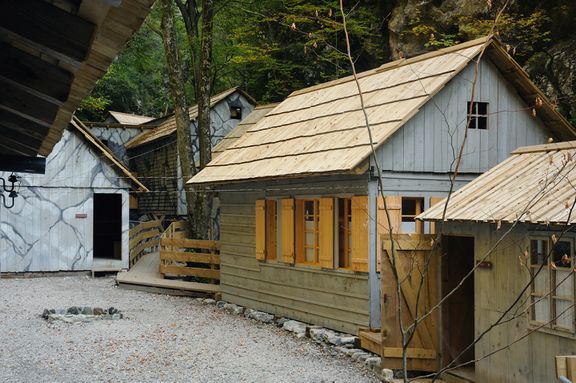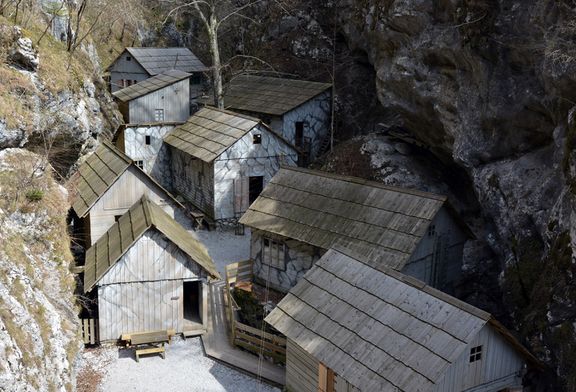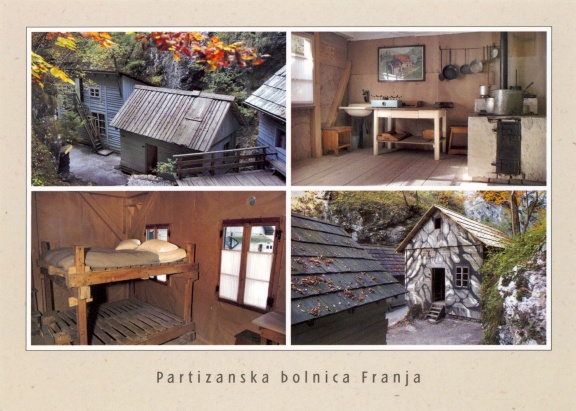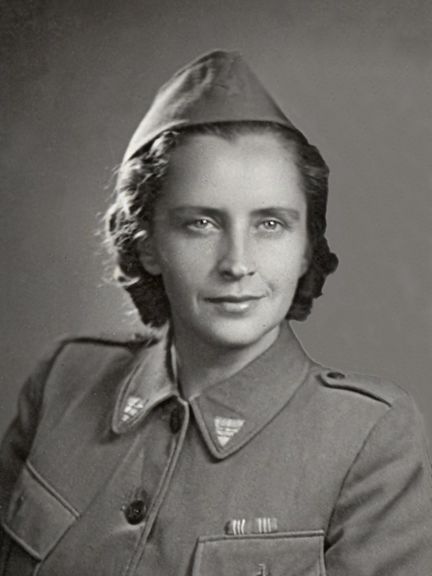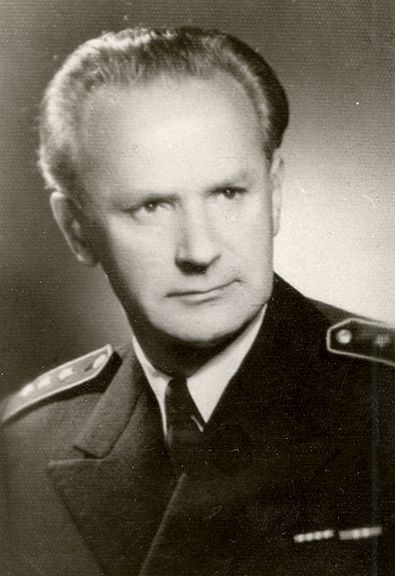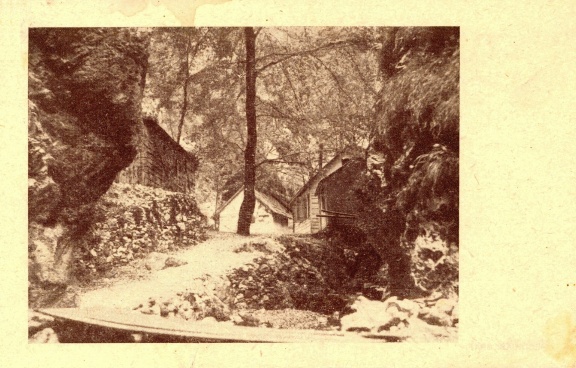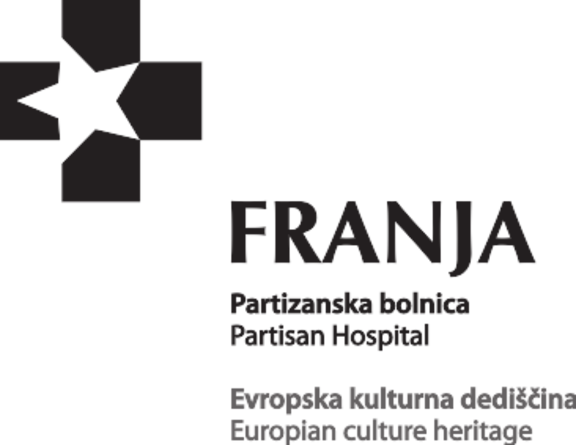Franja Partisan Hospital
The hospital was among the best-equipped of clandestine partisan hospitals, with an operating room, an X-ray apparatus, a care facility for the disabled, and a small electric plant. Most of the equipment was preserved in situ till the flood in 2007. A complete renovation was finished in May 2010. The hospital is administered by Idrija Municipal Museum.
Franja has received a renowned award presented by the Committee for European Heritage, the European Heritage Label, and is also on a Tentative List of the candidates for a UNESCO World Heritage List.
Background
The Slovene military Partisan Hospital Franja was one of the many field hospitals that operated in Slovenia during the Second World War. They formed part of the widely organised resistance movement against fascist and Nazi occupying forces. The successful operation of these hospitals would not have been possible without the enormous support of those who cared for the wounded, many times risking their own lives.
The hospital is named after the Partisan doctor in charge Franja Bojc Bidovec (1913–1985). It was among the best-equipped of clandestine partisan hospitals, with an operating room, an X-ray apparatus, an invalid care facility, and a small electric plant. Most of the equipment was preserved in situ (till the flood in 2007).
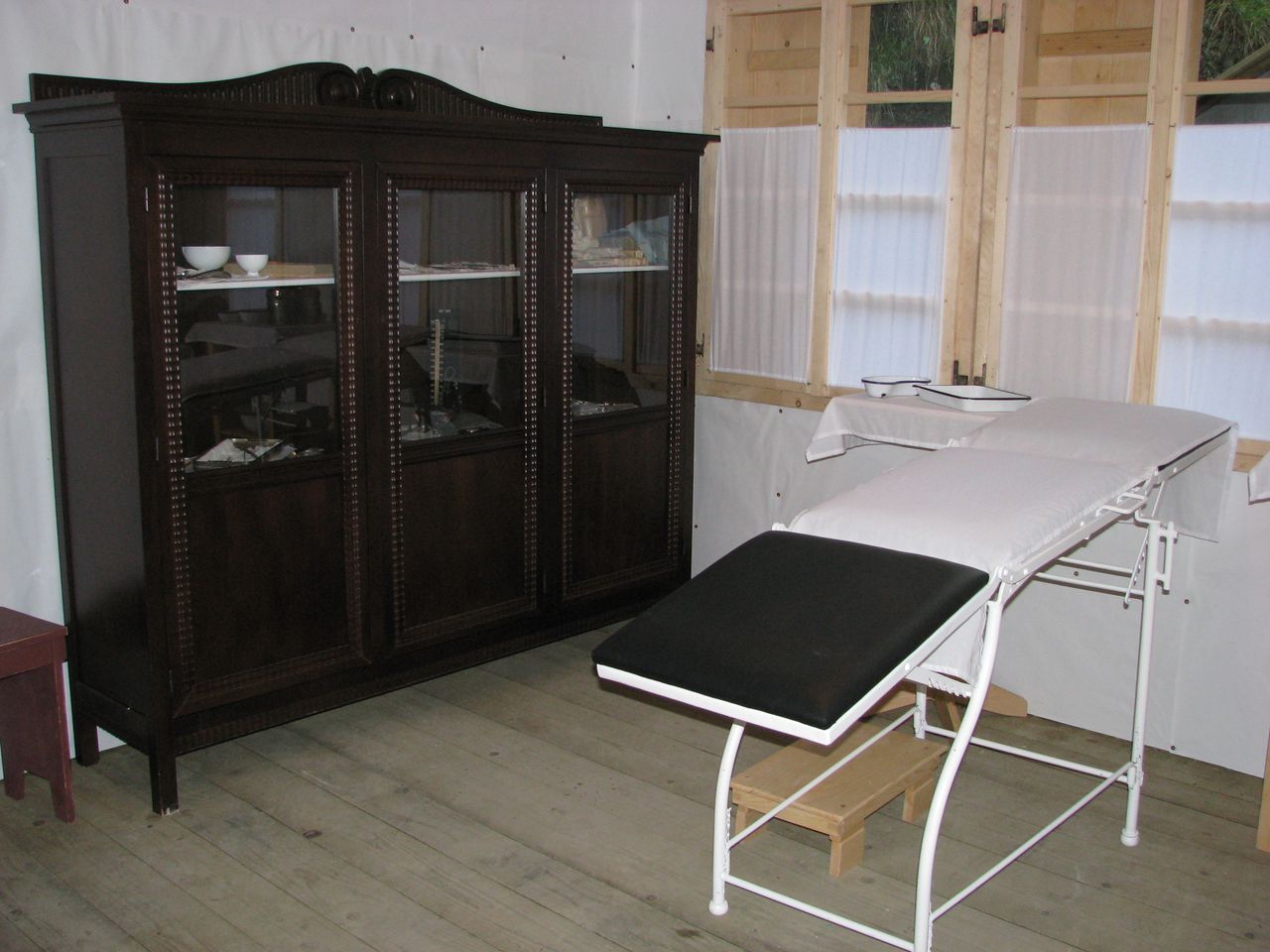 The operating room at the Franja Partisan Hospital. A precise reconstruction of the original interior that was devastated by huge floods in 2007.
The operating room at the Franja Partisan Hospital. A precise reconstruction of the original interior that was devastated by huge floods in 2007.
The hospital had a capacity of up to 120 patients and provided treatment for a total of 578 severely wounded persons. According to the archival records, some 877 wounded soldiers of various nationalities were treated in Franja and its dislocated units alongside Slovenes and citizens of Yugoslav nations, including Italians, French, Poles, people from the Soviet Union, Americans, and two Austrians. One of the patients, a captured German soldier, was kept as a part of the hospital staff after his recovery until the end of the war. During the entire period of the hospital's operation, 78 patients died.
Conspiracy and security were of crucial importance to all clandestine partisan hospitals because, if discovered, they lacked effective defence mechanisms. Most of the route leading to the hospital ran along a stream flowing through the gorge. The wounded were blindfolded and carried to the hospital by its staff, most often at night. In selecting its location, consideration was also given to adequate self-defence in the form of minefields and machine-gun nests, and for this purpose, the hospital was accessible only by footbridges and a drawbridge hidden in the steep Pasice Gorge. Still preserved in the precipitous canyons rising above the stream are several fortified bunkers and natural caves – hiding places for the wounded. Although enemy forces launched several searches for the hospital, it was never discovered.
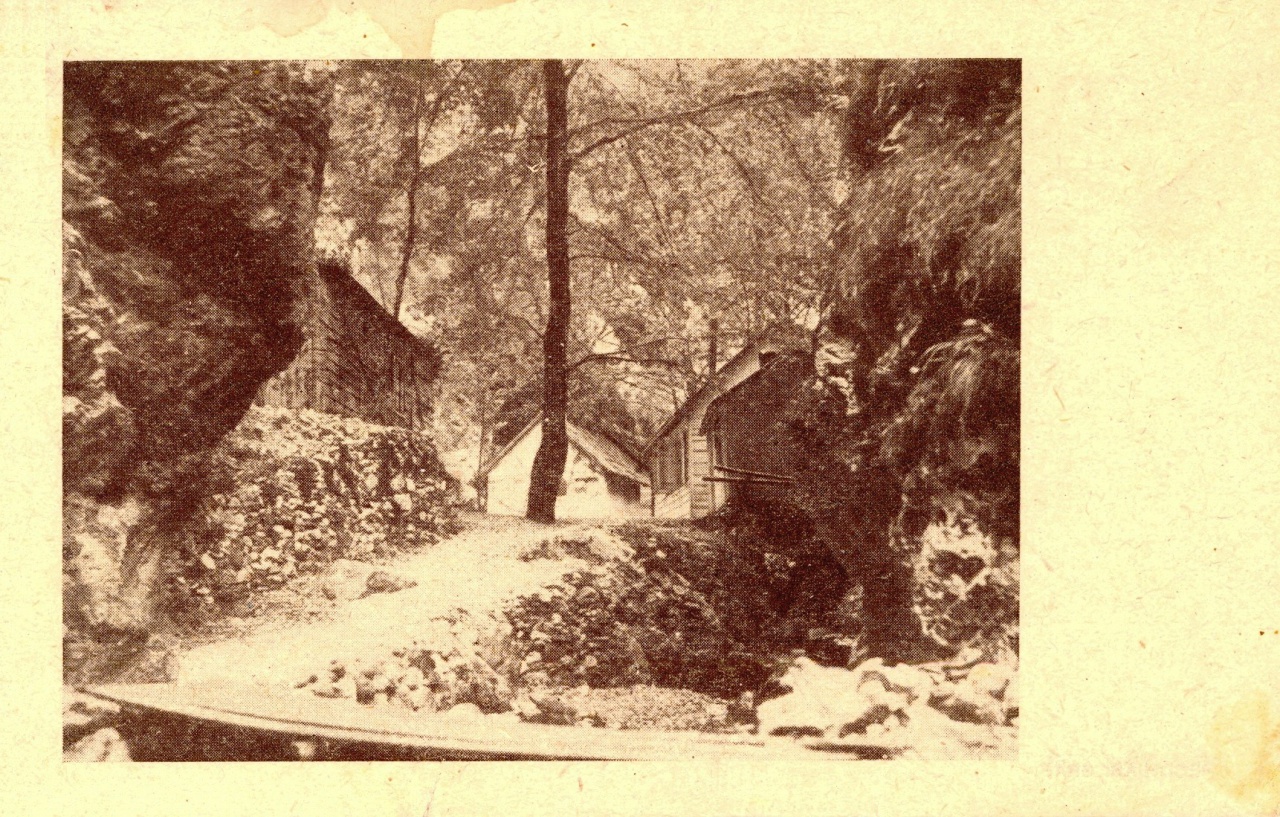 Franja Partisan Hospital, old photo of the entrance
Franja Partisan Hospital, old photo of the entrance
Mission
The Franja Partisan Hospital is a precious reminder of humanity and comradeship and a symbol of international unity and resistance during one of mankind's most difficult tests. It represents virtues that are an indispensable part of present and future relations between nations and countries worldwide.
Reconstruction after the catastrophic flood in 2007
Huge floods devastated the Franja Partisan Hospital on 18 September 2007. Entrance to the Pasice Gorge was not possible and all visits were cancelled. By May 2010, it had been entirely rebuilt to replicate the original.
Some 800 original specimens had been exhibited in the Franja Partisan Hospital. Approximately 225 items remained undamaged, while others were only partly preserved or completely destroyed. Idrija Municipal Museum developed a plan for the future exhibition set-up in the reconstructed monument. It served as a basis for collecting and keeping records of the items and for making replicas that would substitute for the originals. The reconstruction project (funded by the Ministry of Culture and the Ministry of the Environment and Spatial Planning) represented a special challenge due to the fact that the material heritage has mainly been lost. At the same time, its messages remain alive and topical.
Unfortunately, the catastrophic country-wide floods in Slovenia in August 2023 led to further destruction of the hospital. Since then, would-be visitors are directed to Cerkno Museum, which hosts an exhibition about the hospital.
See also
- Idrija Municipal Museum
- Cerkno Museum
- Slovenia Partisan Printing Shop, Vojsko
- Municipality of Cerkno
External Links
- Franja Partisan Hospital on Idrija Municipal Museum website
- The video on reconstruction of the Franja Partisan Hospital
- The EC EU recommendations for the European Heritage Label
- The list of the EHL sites
- Franja Partisan Hospital on the UNESCO World Heritage tentative list
- Franja Partisan Hospital on Wikipedia
- A stamp featuring Franja – issued by the Post of Slovenia to mark the 60th anniversary of Franja Hospital in 2003


